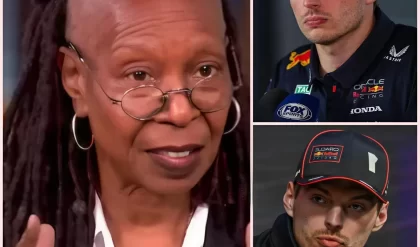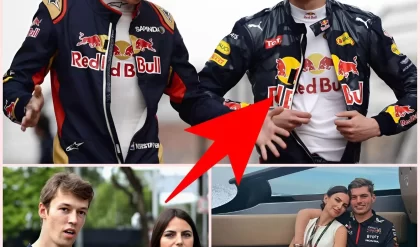In the high-octane world of NASCAR, where speed and strategy collide, a heated debate has been simmering for years: should the sport prioritize increasing horsepower or focus on tire management to improve racing quality? Denny Hamlin, a veteran driver and co-owner of 23XI Racing, recently weighed in, stirring the pot with a provocative perspective. In a candid discussion on his Actions Detrimental podcast, Hamlin dismissed the idea of a horsepower increase as an “illusion” and instead championed tire changes as the key to revitalizing NASCAR’s short-track racing. His take has sparked lively conversations among fans, drivers, and industry insiders, making it a topic ripe for exploration.

For years, NASCAR drivers like Joey Logano, Kyle Busch, and Hamlin himself have pushed for more horsepower in the Cup Series’ Next Gen cars, currently capped at 650 horsepower, down from 750 before 2022 and a far cry from the 900-horsepower beasts of yesteryears. The argument is straightforward: more power would force drivers to lift off the throttle sooner, creating opportunities for overtaking and injecting excitement into races, especially on short tracks like Martinsville and Bristol. Hamlin has previously argued that even a modest bump to 750 horsepower could enhance passing without breaking the bank, as engine bills remain consistent regardless of power output. He’s backed by engine builders like Doug Yates, who confirm that reverting to 750 horsepower requires minimal adjustments, like swapping out a tapered spacer.
Yet, in a surprising pivot, Hamlin recently shifted focus, calling the horsepower debate an “illusion” that distracts from a more practical solution: tire management. On his podcast, he emphasized that Goodyear’s softer “option” tires, introduced at tracks like Phoenix, have already shown promise in shaking up short-track racing. These tires, designed to wear faster and offer more grip, force drivers to strategize, creating dynamic races with more lead changes and passing opportunities. At Phoenix Raceway in 2025, the option tires delivered an exhilarating show, with Hamlin praising their impact on reducing the parity that often leads to predictable, follow-the-leader races. “Goodyear’s finally getting it right,” he noted, crediting the tire manufacturer for addressing what he and Dale Earnhardt Jr. have long seen as the heart of NASCAR’s short-track woes.
Why the shift in Hamlin’s stance? It’s not that he’s abandoned the idea of more horsepower entirely—rather, he sees tire changes as a more immediate, cost-effective fix. NASCAR’s reluctance to boost horsepower stems from concerns about costs and attracting new manufacturers, who might balk at building high-output V8 engines. Hamlin, however, has called out this “red tape” argument, pointing out that engine costs haven’t risen despite past power reductions. Still, he acknowledges the political and logistical hurdles, suggesting that tire innovation sidesteps these issues. Softer tires, like those used at Phoenix, naturally increase tire falloff, forcing drivers to manage their resources carefully and creating the kind of unpredictable racing fans crave.
The fan reaction has been electric, with social media buzzing about Hamlin’s comments. On platforms like X, fans echo his call for changes that make races less about track position and more about driver skill. Posts highlight the thrill of Bristol’s 2024 spring race, where extreme tire wear led to 54 lead changes—a stark contrast to the lackluster eight lead changes in the 2024 fall race. Hamlin’s push for tire-focused solutions resonates with fans who want NASCAR to recapture the raw, unpredictable energy of its short-track roots.
Not everyone agrees, though. Drivers like Kyle Busch remain skeptical, arguing that the Next Gen car’s design inherently limits passing, regardless of tire tweaks. Busch has called for a complete redesign of the car, a sentiment echoed by NASCAR legend Richard Petty after Bristol’s underwhelming 2024 race. Meanwhile, Chase Elliott has taken a more neutral stance, acknowledging tire improvements but remaining indifferent about their optional use. This divide among drivers only fuels the debate, keeping it alive in NASCAR’s passionate community.
Hamlin’s perspective is a pragmatic one, balancing his roles as a driver and team owner. While he hasn’t given up on horsepower, his focus on tires reflects a desire for actionable change now, not years down the road. As NASCAR heads into key short-track races like Martinsville, all eyes will be on Goodyear’s tire strategy and whether it can deliver the excitement Hamlin envisions. For fans, the debate is a reminder of what makes NASCAR special: a sport where raw power, strategy, and driver skill collide in a quest for the checkered flag. What’s your take—horsepower or tires? Join the conversation and let’s keep the engines roaring





